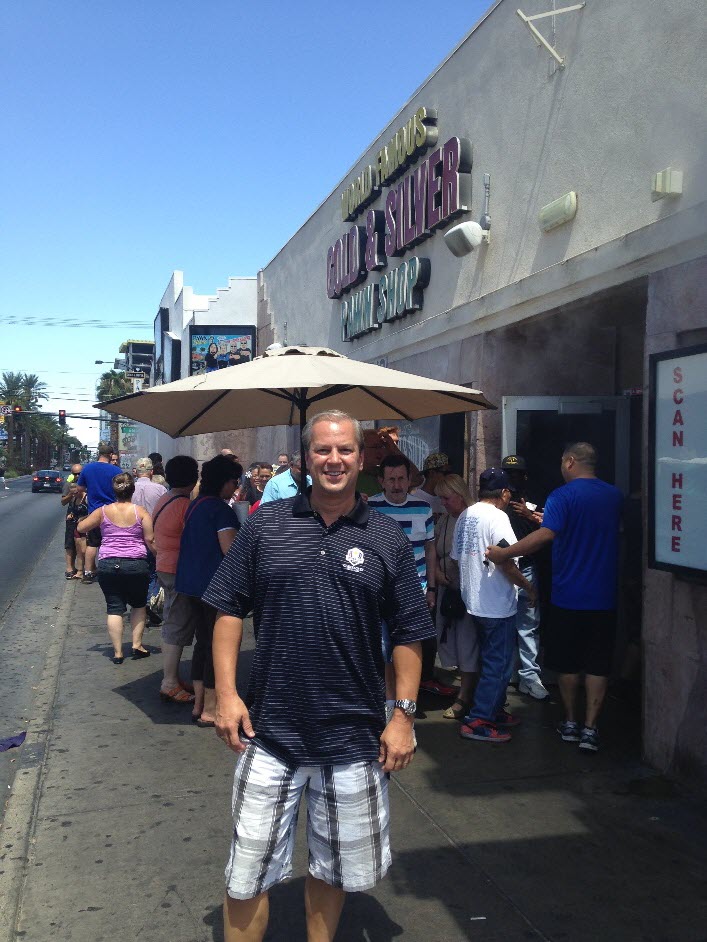If you read my prior blog, “Storage Wars rescues supply chain ignominy”, you would have seen my garage after I moved from Boston to San Diego. Every box we collected for 16 years, stuffed in the Boston attic. And now, in San Diego, the only place to put it was the garage. Well, here’s the updated picture of my garage. I used the supply chain ERP “shedding” theory to innovate and clear out my garage. Just like shedding ERP when building a planning system of record, when I shed my garage, I was able to find cool side benefits. I found an “item” dating back to 1910, Carnegie, Pennsylvania. My grandfather passed it down to my uncle, who passed it down to me. It’s a piece of baseball history from the Pittsburgh area. I’ll tell you in a minute why I cannot say what the item is.
Now came the decision as to what to do with it. I could frame it and put it in my office. A home office that pretty much only I go into. I could hand it down to my son. Or, I could sell it. I know you all would say “hand it down”, but our challenge is having a son with autism. His ability to comprehend what the item means is limited. His interests lie elsewhere. So, as I was watching one of my favorite shows, Pawn Stars, I thought the next time I am in Las Vegas, this is what I will take into the Gold and Silver Pawn Shop. I did some investigation as to the process, best times to avoid the crowds, and how to get a fair price. I found out two really important things:
- The guys: Rick, Big Hoss, Chumlee and the Old Man, rarely, if ever, work the counter. Too many picture takers compromise the discretion of the customers.
- Rick Harrison did something truly great for a young fan with autism.
Having a son with autism myself, I was inspired by this story, and decided this “item” is going to be sold to Rick. In January, 2015, I will follow up this blog with more details. Suffice to say at this time, I did sell the item to the Pawn Stars, and in January, 2015, the episode will air. Until that episode airs, I need to keep the details to a summary level. During the process, I had the chance to talk with the Pawn Stars team. One of the most interesting - well interesting to me, since my world is supply chain - is how they view their business. I asked the guys what the key success factors were:
- Know how to make a profit when buying and selling
- Know your inventory, what needs to turn now, this week, this month, etc.
- Think “cash-flow” at every transaction
This is so much like our world of supply chain. I asked Rick what the toughest challenge was to meeting these success factors. His answer, “determining if something is real or fake, genuine or hot”. Same applies to an end-to-end supply chain – working with bad data. I love Rick’s view of “bad data”. He says you’re running your business on bad data today. What you need to do is twofold. Firstly, do whatever you can to improve the data and secondly, continue to run and improve your business. Don’t wait to fix all the data and then run the business. I’ve been in front of so many supply chain leaders who have this challenge. They have multiple ERPs, external nodes, Excel files, etc., and their data is bad. They feel that this bad data needs to be “fixed” first before doing any supply chain innovations. This is a trap that leads to an endless and expensive “master data” project. Expensive not just because of the project cost, but also because of the lack of focus on improving the business.
I challenge each supply chain leader to do what Pawn Stars does - keep the focus on:
- Profitability: as we improve our data, create simulation capabilities to understand the profit tradeoffs.
- Inventory: as we improve our data, build speed into our demand/supply processes that will drive down inventory, improving working capital and lowering carrying costs.
- Cash Flow: as we improve our data, collaborate across your entire supply chain network to optimize cash flow, enabling the optimal margins for each partner, and the best cost to serve for the consumer.
Great lessons for supply chain, coming from the Pawn industry. Kinaxis RapidResponse not only provides end to end visibility of data, but also the planning models. This critical, as you can see what bad data is impacting what model, and prioritize the focus on cleaning data. To close, I couldn’t leave without some fun facts I learned along the way:
- The symbol of the pawnbroker is three spheres suspended from a bar. Some say it’s from St Nicolas’s gift of three bags of coins to the three daughters of a poor man so they could marry.
- Most expensive item sold at Gold and Silver Pawn shop? Four one kilo gold bars $125,000 USD.
- Oldest item at the shop? Greek Didrachm (ancient Greek currency) dating back to 325 BC.
- Rick’s is an expert at assessing the value of:
- Gibson guitars
- Rolex watches
- Diamonds
- Best night for business at the shop? Fight nights (boxing)
- Who buys the most jewelry? Pimps
- Percentage of pawns redeemed? 80%
- Four items Rick Harrison will never sell?
- Olympic bronze medal
- Patriots Superbowl ring
- 1490 Samurai sword
- Original Iwo Jima battle plan








Discussions
Leave a Reply